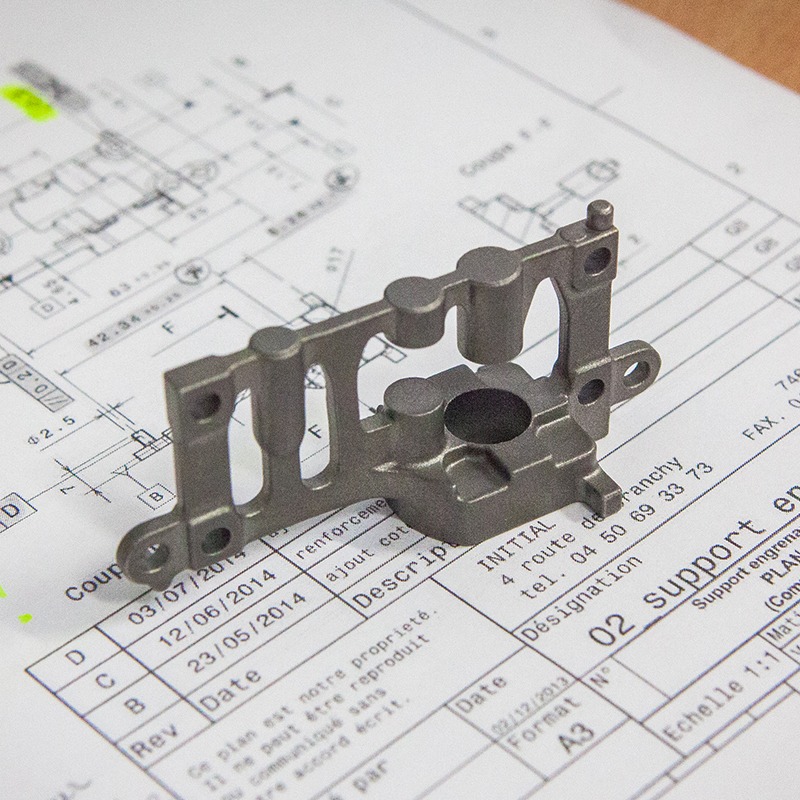Precision Perfection: The Integral Role of Lost Wax Casting in Exquisite Belt Buckle Fabrication
Precision casting, also referred to as lost wax casting or investment casting, is a meticulous and precise process that has been utilized for centuries to create detailed and complex components. The term ‘precision’ is key here, as this method involves creating high-fidelity reproductions of intricate designs.
When it comes to fabricating a sturdy and aesthetically pleasing belt buckle, precision casting is an exceptional choice due to its ability to capture the finesse of a design with unwavering accuracy. A belt buckle is not only a functional item that secures the belt around the waist, but it also serves as a fashion statement and a display of craftsmanship. The process of creating a belt buckle using the lost wax casting method is both an art and a science.
The Intricate Art Behind Crafting a Belt Buckle with Precision Casting
Lost wax casting, known historically as cire-perdue, has been utilized for thousands of years to create objects of beauty and functionality, from the grandeur of bronze sculptures to the intricate designs of jewelry. Today, its precision makes it an ideal choice for manufacturing belt buckles that are not only functional but also carry a sense of sophistication and style.
Precision Casting Process: A Step-by-Step Overview
The creation of a belt buckle via precision casting involves multiple meticulous steps:
1. Designing the Wax Model: Everything starts with a wax model of the desired buckle. Expert artisans or 3D printing technology can sculpt this wax prototype to exact specifications.
2. Creating the Mold: The wax model is encased in a ceramic shell or investment, which is built up layer by layer until it is thick enough to withstand the molten metal.
3. Wax Removal: Once the investment hardens, the wax is melted out, leaving a perfect negative impression of the buckle.
4. Metal Pouring: The next stage involves pouring metal into the cavity of the investment mold. The molten metal flows into every crevice, replicating the wax model’s intricacies.
5. Mold Breakaway: After the metal has cooled and solidified, the ceramic mold is carefully broken away, revealing the metal buckle.
6. Finishing Touches: The buckle undergoes finishing processes such as sandblasting, polishing, and plating to achieve the desired surface finish.
A diverse array of common metal materials
1. Stainless Steel: Valued for its strength and corrosion resistance, stainless steel is a popular choice for durable belt buckles.
2. Aluminum: Known for being lightweight and corrosion-resistant, making it suitable for casual or sporty buckle designs.
3. Brass: With its characteristic golden color, brass is often used for decorative buckles and offers good machinability.
4. Bronze: Similar to brass but typically with a reddish hue, bronze is also favored for decorative purposes and boasts an antique appeal.
5. Copper: Copper can be used for its natural reddish color and is known for its thermal and electrical conductivity.
6. Carbon Steel: This material is characterized by its hardness and strength, employed for more robust buckle requirements.
7. Alloy Steels: Various alloy steels can be used, adding elements like chromium, nickel, or molybdenum to achieve specific properties.
8. Precious Metals: Gold, silver, and platinum group metals are often used for luxury and high-end belt buckles due to their aesthetic appeal and value.
9. Titanium and Titanium Alloys: Titanium is lightweight, exceptionally strong, and resistant to corrosion, ideal for high-end and specialized buckles.
The Advantages of Using Lost Wax Casting for Belt Buckles
1. Precision: This casting method can produce components with intricate shapes and details suitable for the fine work needed in belt buckle creation.
2. Design Flexibility: Designers can faithfully bring their creative visions to life with lost wax casting accommodating complex and nuanced designs.
3. Material Versatility: From precious metals to common alloys, nearly any type of metal material can be used in lost wax casting.
4. Cost-Effectiveness: Although the initial investment in equipment and molds is relatively higher, the cost per unit can decrease significantly with mass production.
A few more examples of products using the lost wax casting process
Dental Prostheses: This includes dental crowns and bridges. The high precision of the lost wax casting process is perfect for creating these customized and intricate items.
Art Sculptures: The lost wax method is often used by artists seeking high levels of detail and precision in their metal sculptures.
Instruments: High-quality musical instruments, such as brass instruments, may have parts created through lost wax casting.
Industrial Machinery Parts: Many precision machinery components, such as gears, shafts, levers, are made using this process.
Maritime Parts: Lost wax casting is used in the maritime field for making parts like propellers and marine hardware which are often exposed to harsh sea conditions.
Firearm Components: From triggers to other smaller precision components, the lost wax casting method can be used to create highly detailed and precise parts.
FAQs About Lost Wax Cast Belt Buckles
Q1: What is the typical timeframe for producing a belt buckle using lost wax casting?
A1: The production cycle from design to final product can take approximately 4 to 6 weeks, varying with the complexity of the design and volume of the order.
Q2: How do belt buckles produced by lost wax casting differ from others on the market?
A2: Buckles produced by lost wax casting typically feature higher precision and more complex designs with superior material quality and craftsmanship.
Q3: Why is lost wax casting able to produce such fine detail?
A3: The method allows the molten metal to fill every crevice of the mold, capturing even the smallest details with exactitude.
Q4: What materials can be used with lost wax casting for making belt buckles?
A4: Each metal has its own set of properties that can affect the casting and finishing process. Factors such as melting temperature, fluidity when molten, susceptibility to oxidation, and inherent tensile strength need to be considered to ensure optimal casting results. The versatility of the lost wax casting process allows for the selection of the most appropriate metal for the intended design and functionality of the belt buckle.
Q5: What are some of the surface finishing processes available for belt buckles?
A5: Common surface treatments include polishing, plating (with gold, silver, nickel, etc.), painting, and sandblasting.
In this article, we have leveraged a vast repository of knowledge to delve deeply into the art of lost wax casting as it pertains to belt buckle production, providing insightful details and relevant FAQs for those interested in exploring this field further. It’s our hope that this piece offers valuable information aiding the curious in their exploratory journey within the realm of precision casting.


